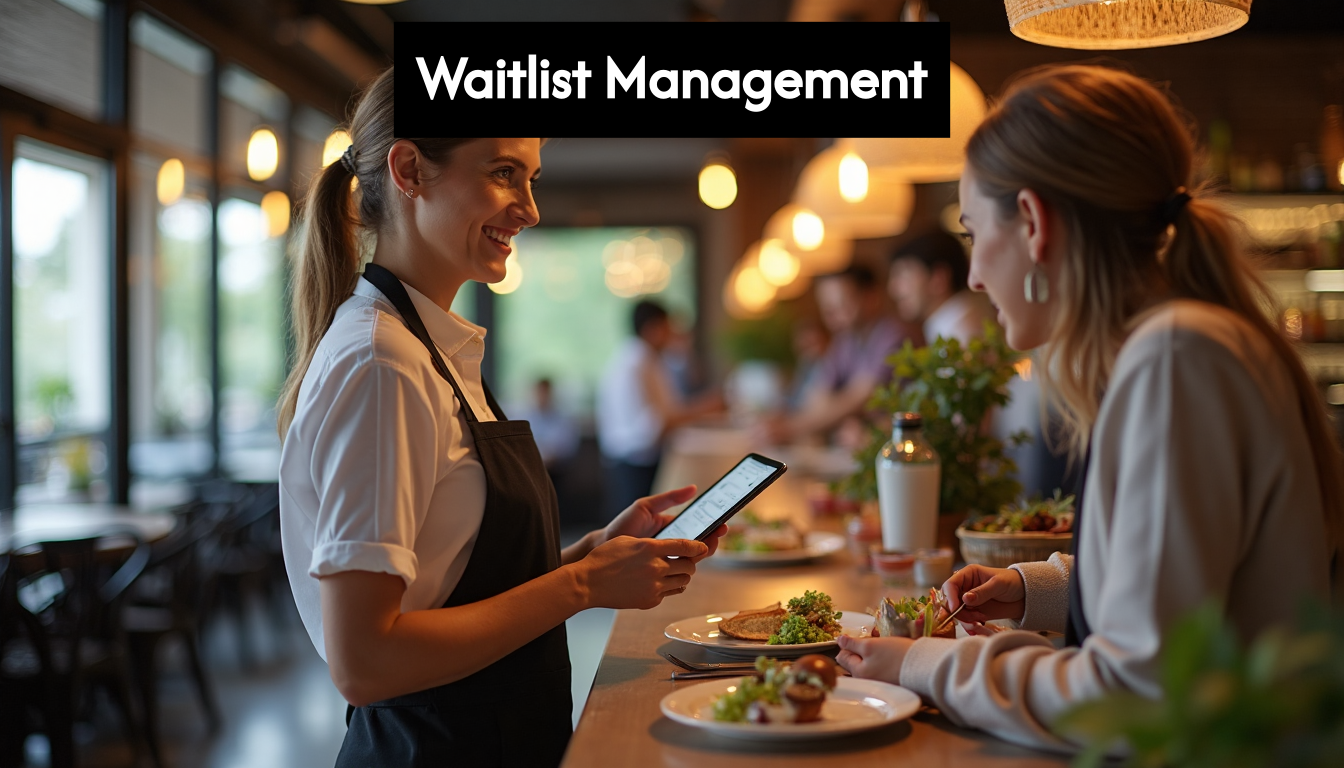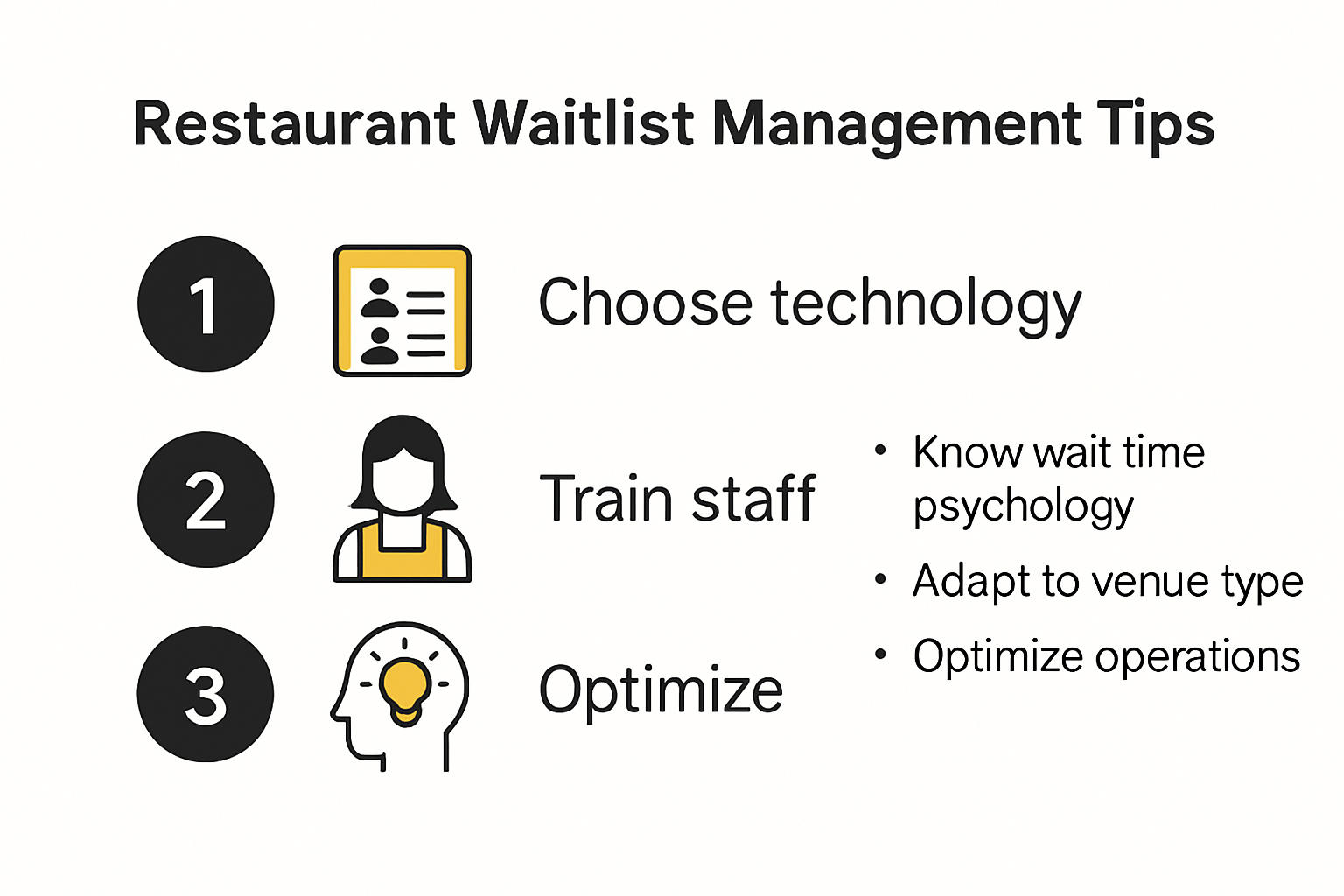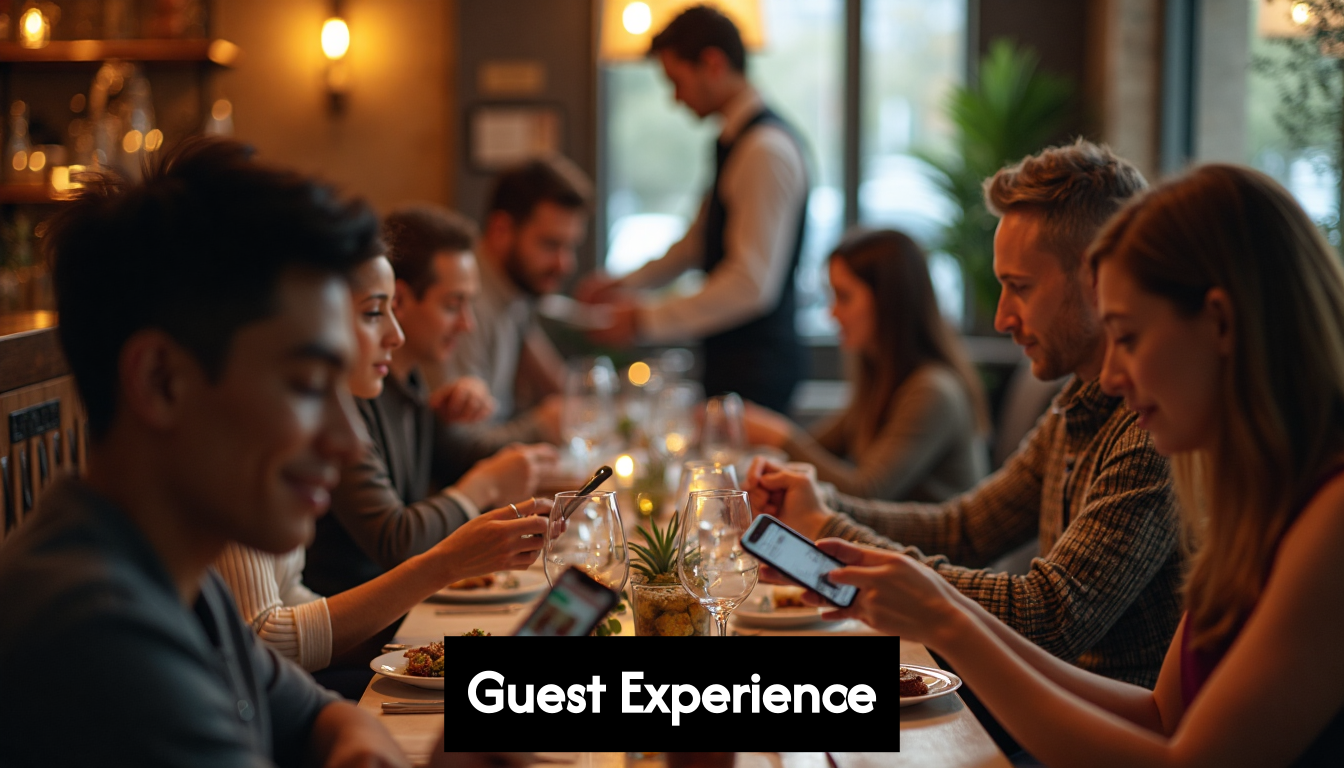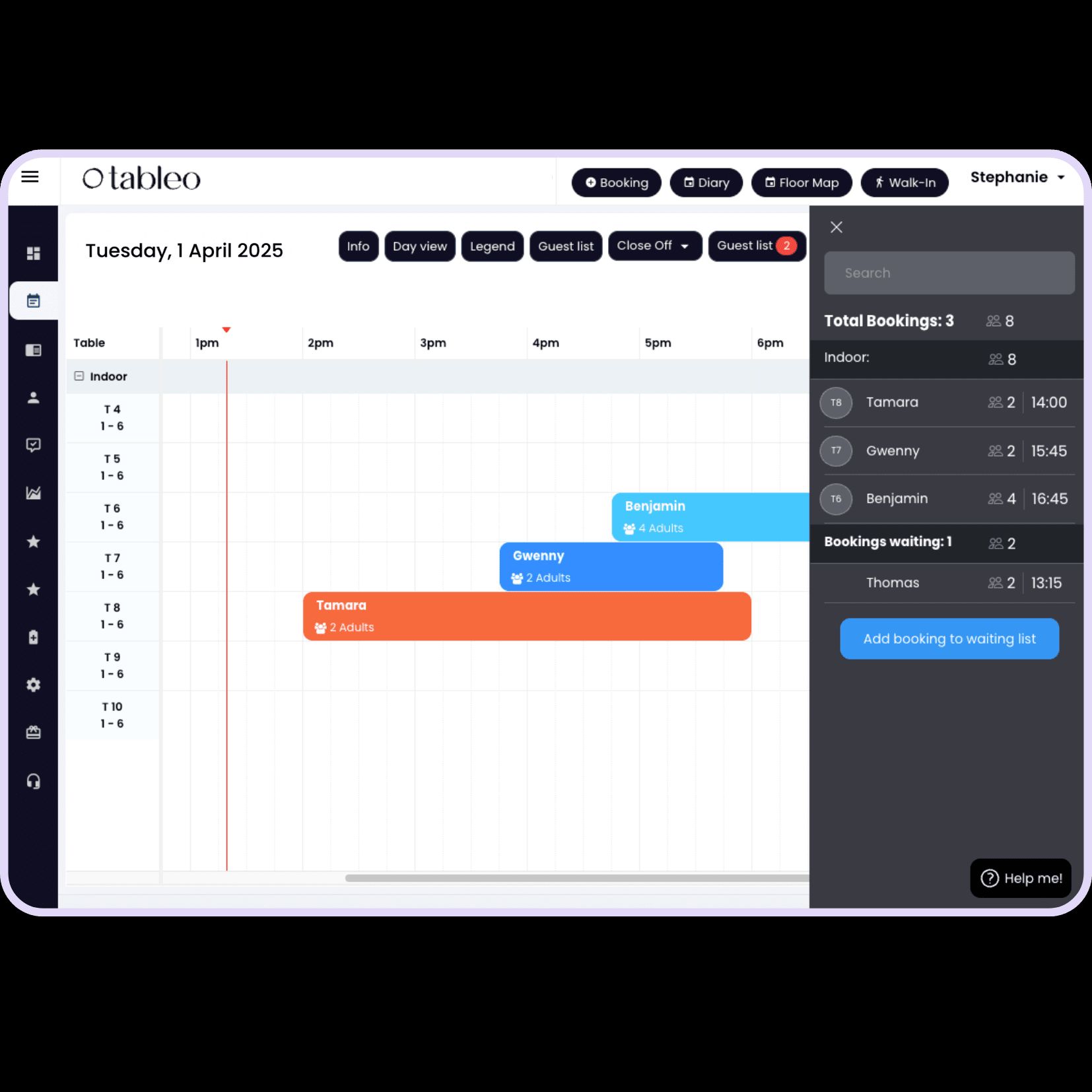Restaurant waitlists have changed massively for 2025 and technology is doing more than just replacing the clipboard. Here is something that stands out. Guests who receive precise wait time estimates are 18 per cent more likely to feel satisfied, even when things get busy. You might think the secret is all about speed, but it is actually about managing expectations and tailoring the whole process to suit each venue’s character. Prepare to rethink how you handle queues.
Table of Contents
- Choosing The Right Waitlist Tools And Technology
- Training Staff For Efficient Waitlist Handling
- Reducing Wait Times To Improve Guest Experience
- Customising Strategies For Different Venue Types
Quick summary
| Takeaway | Explanation |
| Choose the Right Technology | Select waitlist management systems that offer real-time guest communication, analytics, and compatibility with existing POS systems to enhance operational efficiency. |
| Invest in Staff Training | Train staff on communication skills, digital tools, and handling unexpected scenarios to provide a seamless and empathetic guest experience. |
| Understand Wait Time Psychology | Manage customer expectations through transparency and engagement to improve satisfaction, as guests are less satisfied when wait times exceed their expectations. |
| Tailor Strategies by Venue Type | Implement flexible waitlist management strategies that cater to the unique needs of fine dining, casual dining, and boutique venues to optimise guest experiences. |
| Focus on Operational Optimisation | Streamline table turnover, demand forecasting, and preparation processes to reduce wait times and transform waiting into an opportunity for hospitality. |
Choosing the right waitlist tools and technology
Restaurant waitlist management has transformed dramatically, moving beyond traditional clipboard methods to sophisticated digital platforms. Selecting the appropriate technology requires strategic consideration of your specific operational needs and guest experience goals.
Understanding modern waitlist management technology
When evaluating waitlist tools, restaurants must prioritize systems offering comprehensive features that adapt to dynamic hospitality environments. Learn more about advanced waitlist strategies to ensure optimal selection.
Key technological capabilities to assess include:
- Real-time Guest Communication: Solutions that provide instant SMS or mobile notifications about wait times and table status
- Analytics and Reporting: Systems generating insights on peak hours, average wait duration, and guest flow patterns
- Seamless Integration: Tools compatible with existing point-of-sale (POS) and restaurant management platforms
Critical technology selection criteria
Choosing the right waitlist management technology involves evaluating multiple dimensions beyond basic functionality. Modern restaurants require flexible solutions that streamline guest experiences while providing staff with powerful management tools.
Consider the following selection criteria:
- Mobile Compatibility: Ensure the platform supports staff devices and offers guest-facing mobile interfaces
- Customization Options: Look for systems allowing branded experiences and tailored workflow configurations
- Scalability: Select technologies that can grow alongside your restaurant’s evolving needs
Future-proofing your waitlist technology
Successful technology adoption extends beyond immediate functionality. Forward-thinking restaurants must select platforms demonstrating continuous innovation and adaptability. Look for providers offering:
- Artificial intelligence-driven predictive seating
- Multi-channel reservation capabilities
- Comprehensive guest profile tracking
- Automated communication workflows
The ideal waitlist management technology transforms waiting from a potential friction point into a strategic opportunity for enhancing guest satisfaction and operational efficiency. By carefully evaluating technological capabilities, integration potential, and future adaptability, restaurants can implement solutions that not only manage queues but also elevate overall dining experiences.
Training staff for efficient waitlist handling
Effective waitlist management requires more than technological solutions—it demands a well-trained, responsive staff capable of navigating complex guest interactions with precision and empathy. Learn advanced techniques for staff training to transform your team’s performance.
Communication and customer service skills
The success of a restaurant’s waitlist management hinges on staff communication abilities. Hosts and managers must develop nuanced skills that go beyond simply tracking table availability. According to Toast POS, customers who experience accurate wait time estimates are 18% more likely to remain satisfied during peak periods.
Key communication training should focus on:
- Precise time estimation: Teaching staff to provide realistic wait time projections
- Empathetic interaction: Developing techniques to manage guest expectations
- Proactive information sharing: Keeping guests informed about potential delays
Training must emphasize the psychological aspect of waiting. Staff should learn to transform potential frustration into a positive experience through transparent and compassionate communication.
Technical proficiency and workflow management
Modern waitlist management requires staff to be proficient with digital tools and real-time tracking systems. Essential technical training components include:
- Navigating digital waitlist platforms
- Understanding real-time seating algorithms
- Making manual adjustments for complex scenarios
- Handling unexpected reservation changes
Staff must be empowered to make intelligent decisions that balance technological guidance with human judgment. This means training them to recognize situations where manual intervention improves guest experience.
Continuous learning and adaptation
Waitlist management is not a static skill. Restaurants must create ongoing training programs that evolve with technological advancements and changing customer expectations. This involves regular workshops, performance reviews, and scenario-based training sessions.
Training should cover:
- Handling high-stress peak hours
- Managing guest expectations during unexpected delays
- Using data insights to improve seating strategies
- Developing emotional intelligence in customer interactions
By investing in comprehensive staff training, restaurants can transform their waitlist from a potential point of friction into a strategic advantage. Well-trained staff become the human interface of your technological systems, creating seamless experiences that encourage customer loyalty and positive word-of-mouth recommendations.
Reducing wait times to improve guest experience
Wait times represent a critical touchpoint in restaurant guest experience, directly impacting customer satisfaction and potential return visits. Explore strategic approaches to minimizing guest waiting periods to transform potential frustration into positive engagement.
Understanding wait time psychology
Customer perception of waiting fundamentally influences their overall dining experience. According to Toast POS, customers who experience longer than expected wait times are 18% less satisfied with their restaurant visit.
Key psychological factors affecting wait time perception include:
- Transparency: Providing clear, honest wait time estimates
- Communication: Regular updates about table availability
- Engagement: Offering alternatives or entertainment during waiting periods
Restaurants must recognize that wait time management is not just about reducing minutes, but about creating a positive emotional experience that makes waiting feel more acceptable and potentially enjoyable.
Technological strategies for wait time reduction
Modern restaurants can leverage technology to significantly minimize wait times and improve guest experience. Effective technological approaches include:
- Predictive seating algorithms
- Mobile notifications for wait status
- Virtual queuing systems
- Real-time table turnover tracking
By implementing these technologies, restaurants can provide guests with more accurate expectations and reduce uncertainty during waiting periods. The goal is to transform waiting from a passive experience into an actively managed process.
Operational optimization techniques
Beyond technology, restaurants must develop comprehensive operational strategies to minimize wait times. Critical operational techniques include:
- Streamlining table preparation processes
- Training staff in rapid yet thorough table turnover
- Implementing flexible seating arrangements
- Developing accurate demand forecasting
Successful wait time reduction requires a holistic approach that combines technological solutions, staff training, and strategic operational planning. By treating waiting not as an inconvenience but as an opportunity to demonstrate hospitality, restaurants can transform potential customer frustration into a positive, memorable experience that encourages repeat visits and positive word-of-mouth recommendations.
Customising strategies for different venue types
Waitlist managementt is not a one-size-fits-all solution. Each restaurant type demands a nuanced approach that considers its unique operational characteristics, customer expectations, and service style. Discover tailored waitlist strategies for maximizing efficiency across different venue types.
Fine dining and specialty restaurants
In high-end and specialty restaurants, waitlist management transcends mere table tracking. These venues require sophisticated strategies that prioritize personalized guest experiences and precise communication.
Key considerations for fine dining establishments include:
- Personalized tracking: Maintaining detailed guest profiles
- Reservation precision: Implementing strict time slot management
- Exclusive communication: Offering branded virtual waiting experiences
These restaurants must focus on creating an anticipatory service environment where waiting becomes an extension of the dining experience, not a disruption.
High-volume and casual dining venues
Casual and high-traffic restaurants demand waitlist strategies emphasizing speed, efficiency, and real-time communication. Toast POS research highlights the importance of technology that enables rapid table turnover and seamless guest management.
Effective strategies for these venues include:
- Digital self-check-in systems
- Automated text message notifications
- Social media integration for waitlist management
- Menu promotion during waiting periods
The goal is to transform waiting from a potential frustration point into an engaging, interactive experience that keeps guests informed and entertained.
Boutique and specialized hospitality venues
Boutique hotels, bars, and specialized dining venues require flexible waitlist approaches that reflect their unique brand identity. Strategic approaches for these venues should focus on:
- Dynamic seating algorithms
- Integrated guest engagement tools
- Flexible reservation management
- Customizable waitlist interfaces
Successful waitlist management in 2025 demands a holistic understanding of each venue’s distinct operational ecosystem. By tailoring technological solutions and communication strategies to specific restaurant types, establishments can transform waiting from a potential pain point into a strategic opportunity for enhancing guest satisfaction and operational efficiency. The key lies in recognizing that every restaurant tells a unique story, and its waitlist management should reflect that narrative.
Frequently Asked Questions
What are the best tools for managing restaurant waitlists in 2025?
Selecting the right waitlist management tools involves prioritising features like real-time guest communication, analytics, and seamless integration with existing POS systems to enhance operational efficiency.
How can I train my staff for effective waitlist management?
Invest in comprehensive training focused on communication skills, technical proficiency with digital tools, and customer service techniques to ensure staff can provide a seamless and empathetic guest experience.
What psychological factors influence guest satisfaction during wait times?
Managing expectations through transparency, regular updates, and engagement can significantly improve guest satisfaction. Customers are less satisfied when their wait times exceed what they anticipate.
How should waitlist strategies differ between casual and fine dining restaurants?
Fine dining establishments should focus on personalised tracking and exclusive communication, while casual dining venues should prioritise speed and real-time interaction to enhance guest experiences.
Ready to transform your restaurant waitlist into a seamless experience?
Long queues and frustrated customers can quickly turn busy nights into lost opportunities. As described in this article, overcoming unpredictable wait times, inaccurate estimates, and staff overwhelm is no longer about guesswork. Leading restaurants in 2025 are embracing tools that combine digital waitlist solutions, guest tracking, and automated messaging. Imagine keeping every guest in the loop, reducing walkaways, and effortlessly handling even the busiest services.
Take control of your peak times now. Discover how Tableo helps you deliver precise wait estimates, automate guest updates, and give your staff an edge with cutting-edge reservation management. Boost guest satisfaction today — visit our website to see how your restaurant can benefit from proven hospitality technology and stay ahead in a fast-evolving industry.
Recommended Articles

Stephanie Paris
Gen-Z marketing coordinator bringing fresh energy to web and graphic design, with a weekend habit of chasing adventure.













